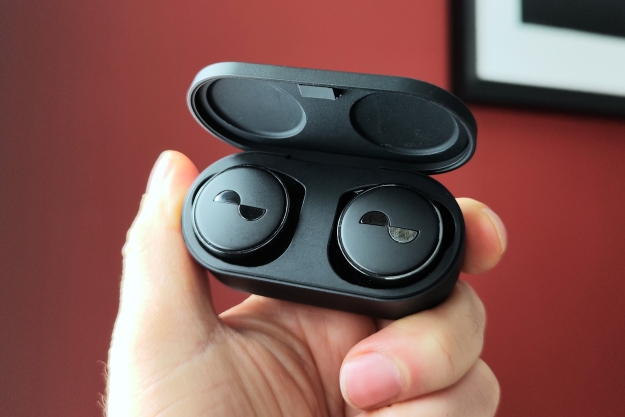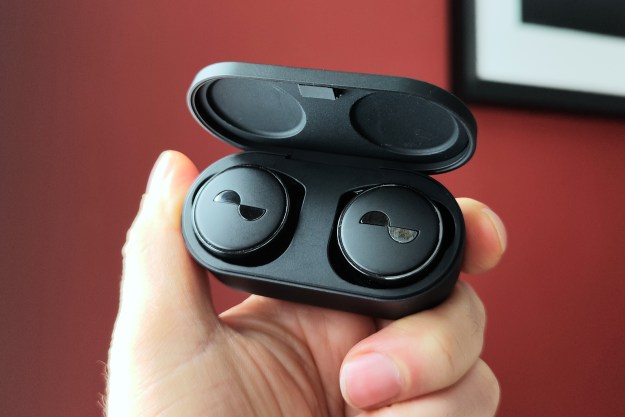
“For those with a compatible phone, you can’t beat the sound.”
- aptX Lossless codec
- Superb sound
- Excellent app support
- Wireless charging
- Bluetooth Multipoint
- Expensive
- Few phones support aptX Lossless
- Mediocre call quality
In 2022, Nura debuted the $329 NuraTrue Pro — its second set of wireless earbuds. I got a chance to try them out, but I didn’t write a full review. Why? As much as I was able to test features like active noise canceling and Nura’s proprietary tuning system that measures how your ears respond to sound, the NuraTrue Pro were the first wireless earbuds to support Qualcomm’s aptX Lossless Bluetooth codec, and I had no way to test it.
Like all Bluetooth codecs, aptX Lossless needs to be supported on both ends — the earbuds and the phone — and I didn’t have an aptX Lossless smartphone. A few weeks ago, however, Nura took pity on me and sent me an Asus Zenfone 9, and I was finally able to put the NuraTrue Pro through their paces.
As it turns out, I probably could have written the full review without the Zenfone. Here’s why.
The low-down on lossless
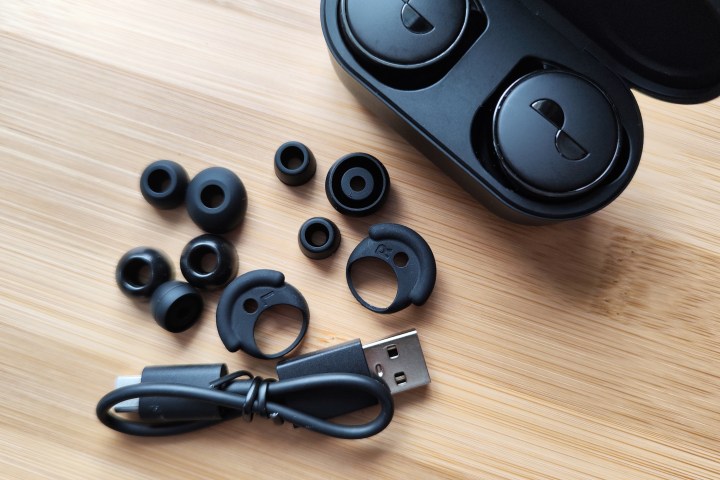
First, a quick recap on aptX Lossless and why you should care. Bluetooth audio always has used what’s known as “lossy” compression. It doesn’t matter if your devices work with AAC, aptX, LDAC, aptX HD, or any number of other Bluetooth codecs — they’re all lossy, which means that some of the original information from the music playing on your phone was being sacrificed in order to fit down the fairly narrow wireless pipe that is Bluetooth.
AptX Lossless is the first codec to promise that it will preserve every one and zero that makes up your favorite songs, with support for 16-bit/44.1kHz, otherwise known as “CD quality.” For those who care a lot about pristine audio quality, this is kind of a big deal.
There are two problems with aptX Lossless. The first is that only a select few Snapdragon Sound-equipped phones support it. (Good luck figuring out which ones do.) Second is that it turns out that some of our existing lossy options already are really good. So good in fact, that when I ran a blind comparison using the NuraTrue Pro to listen to a variety of tracks where the advantages of Lossless should have been noticeable, I struggled to tell the difference between the lossless and lossy versions.
Take the Pepsi challenge
To perform the test, I took advantage of the NuraTrue Pro’s Bluetooth Multipoint capabilities to connect them simultaneously to two phones at once. Sitting in a quiet room, with the volume set to 60% on each device, my daughter volunteered as DJ and pressed play and pause on each track, never telling me which phone I was listening to. For all I knew, she could have been using the same phone for each track or a different phone. My job was to listen to the same 15- to 20-second clip from a specific track twice, and then tell her which one sounded better to me.
My first comparison was between the Asus Zenfone 9 and an iPhone 14. The iPhone uses the AAC codec when available, and the NuraTrue Pro supports AAC. It is a good codec, but it’s been around a long time and it has a hard limit on its bitrate when used with Bluetooth of 320 kilobits per second (Kbps). To put that in perspective, aptX Lossless uses more than 300% more bandwidth at 1 megabit per second (1,000 Kbps). Not surprisingly, I could hear a difference between them. It wasn’t night and day, but if you listened closely, aptX Lossless consistently delivered more detail and less harshness than AAC. Of the six or so test tracks, I was able to pick the Lossless version 100% of the time, with no need to re-listen to the two versions.
My second comparison proved way harder. This time the Zenfone 9 was up against a Xiaomi 12 Pro equipped with aptX Adaptive. Quick sidebar: aptX Lossless is actually a special mode that some aptX Adaptive phones can use, so you will likely never see “aptX Lossless” listed in your device’s Bluetooth menu. More on that incredibly bad design in a moment.
Related: What is aptX? Cutting through the clutter of Qualcomm’s codecs
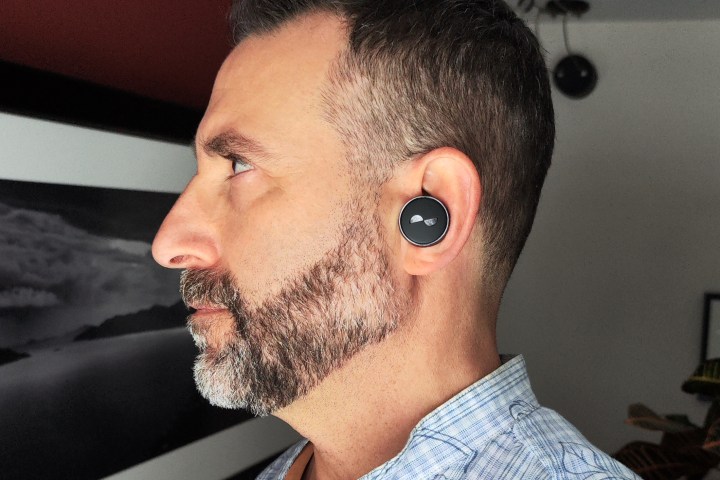
Even though aptX Adaptive is lossy, it’s a much newer and more efficient codec than AAC, and it also (as its name suggests) can adapt to the quality of your phone/earbuds’ Bluetooth connection. When things are zipping along, Adaptive can use up to 660Kbps. It also (for the audiophiles out there) can support up to 24-bit/96kHz.
The point here is that aptX Adaptive was, until recently, one of the best Bluetooth codecs you could use, and bumping up to aptX Lossless represents a much smaller leap in quality than going from AAC to aptX Lossless.
The proof? Using the same test tracks, my accuracy dropped to 60% and on several occasions, it felt like pure guesswork. It’s entirely possible that if we had kept at it long enough, that success rate would have dropped further.
My conclusion is that aptX Lossless can absolutely deliver better audio, especially if you’re used to a codec like AAC. If you’re an iPhone user rocking a set of NuraTrue Pro, and you switch to an Asus Zenfone 9, I promise you will hear an improvement. However, that advantage gets a lot narrower if you’re already using an aptX Adaptive-capable phone.
Is it really lossless?
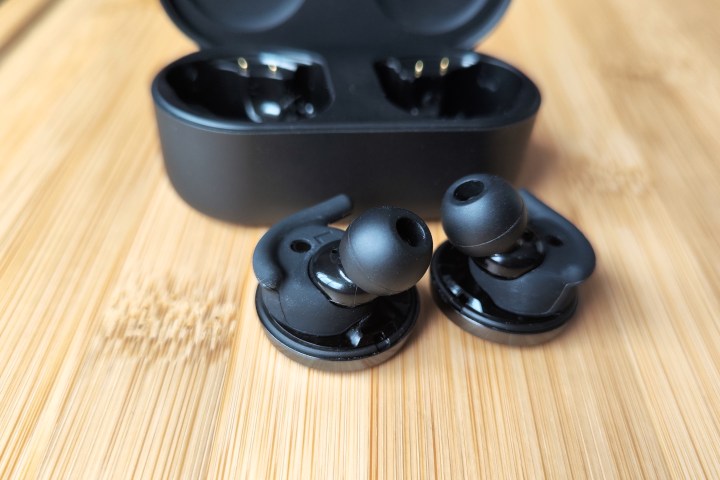
But here’s my real beef with aptX Lossless — and to be clear, this a Qualcomm problem, not a Nura problem: It’s just too hard to know when your earbuds are using the aptX Lossless codec. Nura tries to address it inside the Nura app. With music playing, you can select the menu option and at the top of the next screen, you’ll see “Connected to NuraTrue Pro,” followed by AAC, or aptX Adaptive HQ 44.1K (this is actually aptX Lossless), or aptX Adaptive HQ 48K, which I believe is aptX Adaptive doing its lossy, 24-bit mode at 48Khz (kinda hard to say).
There’s no way it should be this complicated, and there’s no way it should rely so heavily on a 3rd party app. Phones equipped with aptX Lossless should have a clear way of indicating when that’s the codec being used — it’s the missing speedometer problem I’ve described recently.
Superb sound
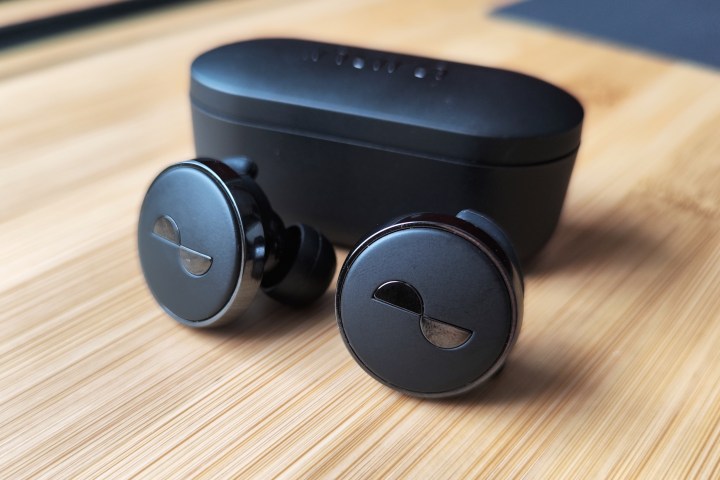
It’s worth noting that the NuraTrue Pro, aside from their lossless audio capabilities, are just generally great earbuds. So lest you form the wrong impression from that comparison above, let me state for the record that you will love listening to them even if you are limited to an iPhone’s AAC codec.
The key to getting the most out of the NuraTrue Pro is to use the free Nura app to create a personalized sound profile. It only takes a few minutes to set up and unlike some other tuning systems, there’s no A/B testing to see which EQ balances you prefer or listening tests. The earbuds pump a variety of test tones into your ear and a few moments later you’re all done.
Once the process is complete, you can switch personalization on and off to hear the difference. For me, the difference was profound, but don’t make the mistake of thinking that other earbuds that don’t have Nura’s system will sound like the “off” version — it’s not as simple as that.
You can, if you want, tune the NuraTrue Pro even further. An “immersion” level slider effectively gives you different amounts of bass boost — from just a wee bit to great big pounding levels. It can get overwhelming fast. For an even more powerful bass response, try the included foam eartips.
Nura has also jumped on the spatial audio trend (thanks, Apple) with an optional Spatial Audio mode. It’s powered by Dirac Virtuo, the same spatial processing used on the Sudio E2. But there must be a difference in the way Nura has implemented it. On the Sudio, it was noticeable and at times quite enjoyable. Not so much on the NuraTrue Pro. I tried it on a number of tracks and found it made very little difference to the sound. It’s nothing like what a Dolby Atmos version of a song can do in terms of a 3D feel, and it’s not as capable of a 3D simulator as the spatial effect offered by LG, 1More, or Soundcore.
If you’re more of a purist, the ProEQ tab gives you a five-channel set of individual frequencies to work with, and I found that there was a lot you could do with it. My only criticism: there’s no way to save an EQ formula that you really like while you experiment with other combinations.
When dialed in to my tastes, the NuraTrue Pro were a treat. They create a generous soundstage with good precision, and it was easy to kick back and get lost in the sound. The bass is tight and at times even musical, and I found the midranges and highs possessed plenty of detail, with no noticeable distortion even at volume levels well higher than I suspect is safe for any long-term listening. In short, they can easily go toe-to-toe with the best wireless earbuds like the Sony WF-1000XM4, Bose QuietComfort Earbuds II, Bowers & Wilkins Pi7 S2, and Sennheiser Momentum True Wireless 3.
ANC, calling, controls, and battery life
The same isn’t true for active noise cancellation. It can definitely take the edge off annoying external sounds, and it seems to be especially effective at curtailing higher frequencies, but if you want a true blanket of silence, you’ll get better results from the AirPods Pro Gen 2, Bose QuietComfort Earbuds II, and Sony WH-1000XM4. That said, transparency mode (Nura calls it “social mode”) is excellent both on its own and when you’re using it for phone calls to hear your own voice more clearly.
It’s not quite up to par with the AirPods Pro Gen 2, in that the mics seem to have their gain (volume) set a bit on the high side, which creates a small amount of noise even when things are quiet, but that’s far from a deal breaker.
I’m a big fan of the way these earbuds fit. I found them very comfortable for several hours of continuous use. Not only does the disc shape of the external housing give you excellent grip as you twist the buds into place, but you also get a choice of anchors. The preinstalled wings are low-profile and yet they offer very good stability, while the optional larger wings create even more contact, ensuring that only the most aggressive, high-impact movements will be able to dislodge them. Not that the NuraTrue Pro are meant to be workout companions — with only an IPX4 water-resistance rating, they’ll definitely handle a bit of sweat, but keep them well clear of the shower.
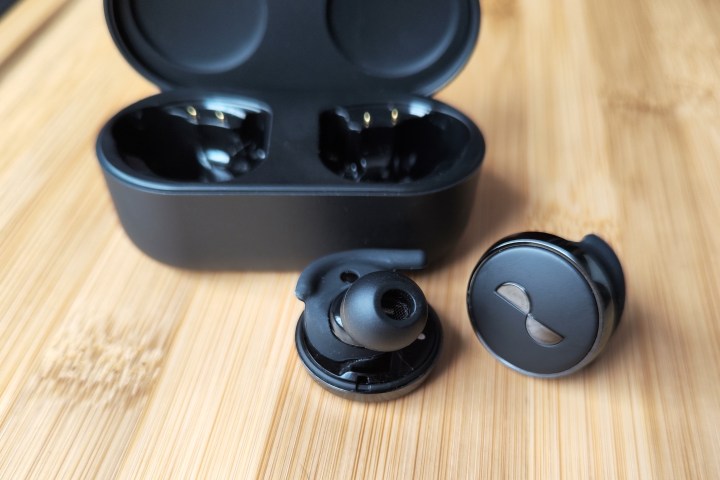
Unfortunately, call quality is a disappointment, especially when outdoors or anywhere where there’s a lot of background noise. When I originally tried these earbuds, I felt they did a decent job, but those were pre-production units. The full production version I was sent for this review don’t perform as well. They handily mask competing noises, but in doing so they drastically reduce the clarity of your voice in the process. It’s not an uncommon failing in a set of wireless earbuds, but at this price, it feels a lot less forgivable — and it’s a genuine mystery given that the NuraTrue Pro possess a huge number of mics (four per earbud, including one bone-conduction unit). When things are acceptably quiet, the performance is much better, but it still can’t compete with the AirPods Pro Gen 2 or the Jabra Elite 7 Pro.
The controls, as far as touch controls go, are very good. One advantage to the NuraTrue Pro’s unusual disc-shaped design is that it offers a large target area for tapping. Most of the time, I had no problem with accuracy. I also have to give Nura big props for letting us customize these controls any way we please. With four gestures per side (tap, double-tap, triple-tap, plus double-tap-and-hold) you’ve got eight controls to work with. Moreover, you can assign any of the earbuds’ features to any gesture, including immersion and spatial audio.
Battery life, at a claimed eight hours per charge (with an additional 24 hours in the case) is very good. I found that with the volume set around 50%, and ANC turned on, you can get very close to these numbers, with a small decrease as you ramp volume levels up. You get a decent quick charge of one extra hour of playtime for five minutes of charging.
The bottom line: the NuraTrue Pro sound amazing with or without aptX Lossless and they pack enough features to make them worthy competitors to the best earbuds on the market. Trouble is, at $329, they cost considerably more than most of these other earbuds, and it’s not clear to me that their lossless audio capabilities offer an appreciable enough boost to sound quality to justify that premium. Still, if you enjoy knowing that what you’re hearing is precisely what you’re playing, there’s nothing out there that can match the NuraTrue Pro’s CD quality claim (yet).
Editors’ Recommendations
Services Marketplace – Listings, Bookings & Reviews
